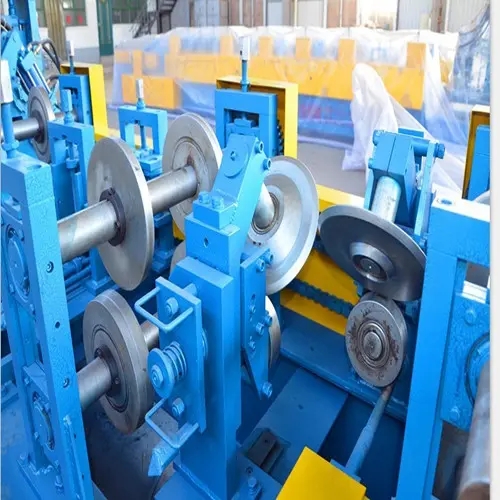
The Evolution and Impact of Stud Making Machines
In the modern manufacturing landscape, the production of fasteners has become a crucial part of various industries, from automotive to construction. Among these fasteners, studs play an essential role due to their versatile applications in securing components. The advent of stud making machines has revolutionized the way studs are manufactured, leading to increased efficiency, precision, and cost-effectiveness.
What is a Stud Making Machine?
A stud making machine is a specialized piece of equipment designed to produce studs in different sizes and materials with high efficiency. These machines operate on a principle of converting raw materials, typically metal rods, into finished products through several processes, including cutting, threading, and forming. The result is a high-quality stud that can be used in a variety of applications, including fastening engines, connecting pipes, or assembling structures.
The Manufacturing Process
The process begins with the selection of the right raw material, often steel, which is chosen for its strength and durability. The metal rod is fed into the machine, where it is cut to the desired length. The machine then threads the ends of the stud according to specific standards, allowing for a secure fit with nuts or other components. Advanced stud making machines employ CNC (Computer Numerical Control) technology, enabling them to execute multiple operations simultaneously, thus optimizing time and reducing waste.
The introduction of automation in stud making has significantly increased production rates. Traditional methods were labor-intensive and time-consuming, but modern machines can produce thousands of studs in a single day with little to no human intervention. This enhanced productivity allows manufacturers to meet the increasing demands of industries more swiftly, all while maintaining quality standards.
Benefits of Using Stud Making Machines
1. Increased Precision One of the prominent advantages of stud making machines is their precision. CNC technology ensures that each stud meets exact specifications, minimizing the risk of defects. High precision reduces the likelihood of failures in assemblies, which can be critical in sectors like aerospace and automotive.

2. Cost Efficiency While the initial investment in a stud making machine might be significant, the long-term savings are substantial. Automated production lowers labor costs and reduces material waste, leading to a more economically sustainable operation.
3. Flexibility and Customization Modern stud making machines are highly versatile, enabling manufacturers to produce a variety of stud types and dimensions with ease. This flexibility is essential for companies that need to customize products according to client specifications.
4. Enhanced Safety Automation reduces the need for manual labor in potentially hazardous environments. This shift not only protects workers but also decreases workplace accidents, ensuring a safer manufacturing process.
The Future of Stud Making Machines
As technology advances, the future of stud making machines is promising. Innovations such as Artificial Intelligence (AI) and the Internet of Things (IoT) are beginning to play a role in the manufacturing process, allowing machines to communicate, analyze performance, and optimize production in real-time. This shift toward smart manufacturing will further enhance efficiency and reduce downtime.
Moreover, with the rising emphasis on sustainable manufacturing practices, stud making machines are being designed to minimize energy consumption and waste production. Manufacturers are increasingly seeking eco-friendly options, integrating recycled materials and reducing their carbon footprint in the stud production process.
Conclusion
Stud making machines are a vital part of modern manufacturing, enabling the efficient production of essential components across various industries. With their precision, cost-effectiveness, and adaptability, these machines have transformed the way studs are manufactured, paving the way for innovations that enhance productivity and sustainability. As we look to the future, the integration of advanced technologies will undoubtedly usher in a new era for stud manufacturing, making it smarter, safer, and greener. This evolution not only benefits manufacturers but also contributes positively to the industries that rely on these critical fasteners.